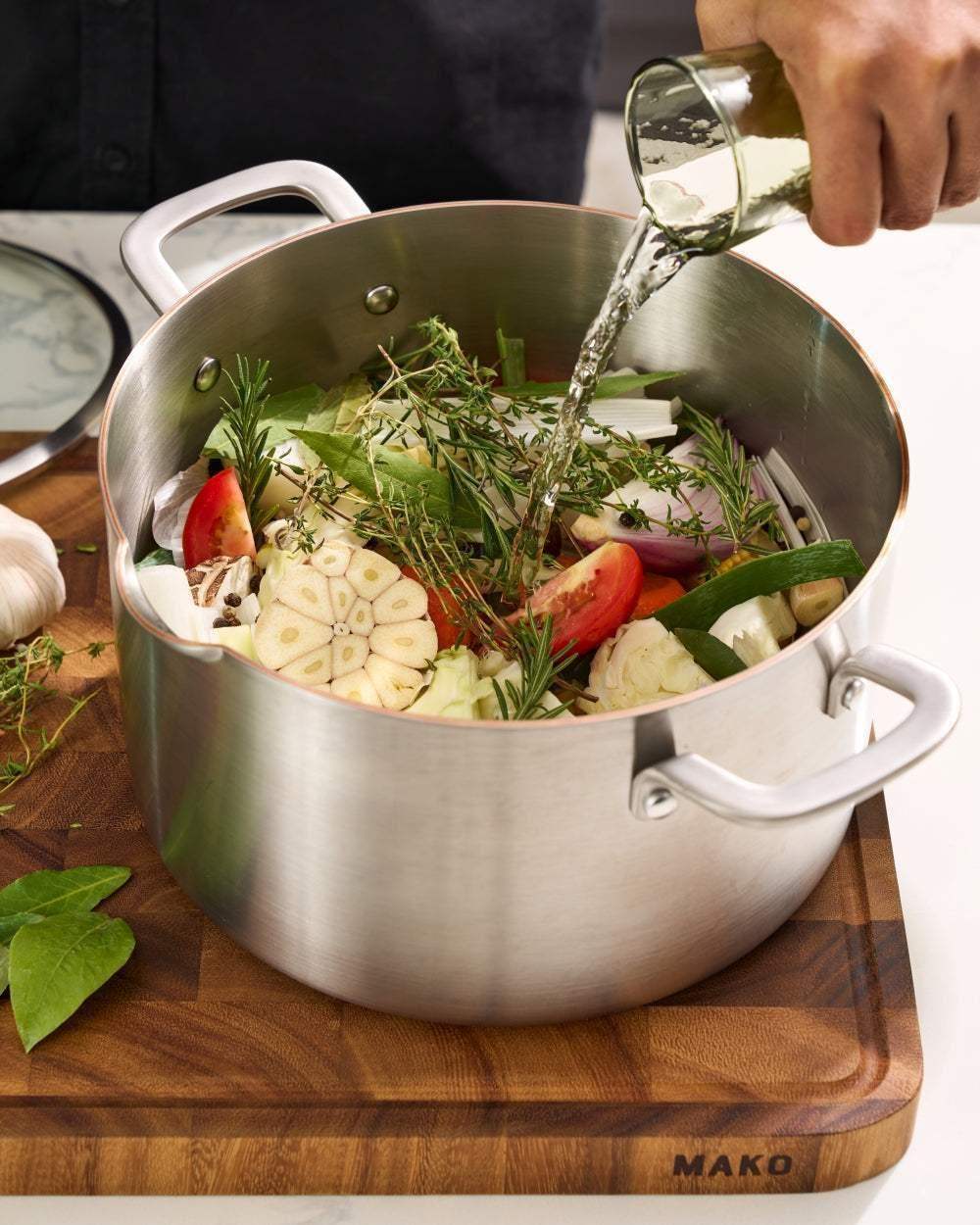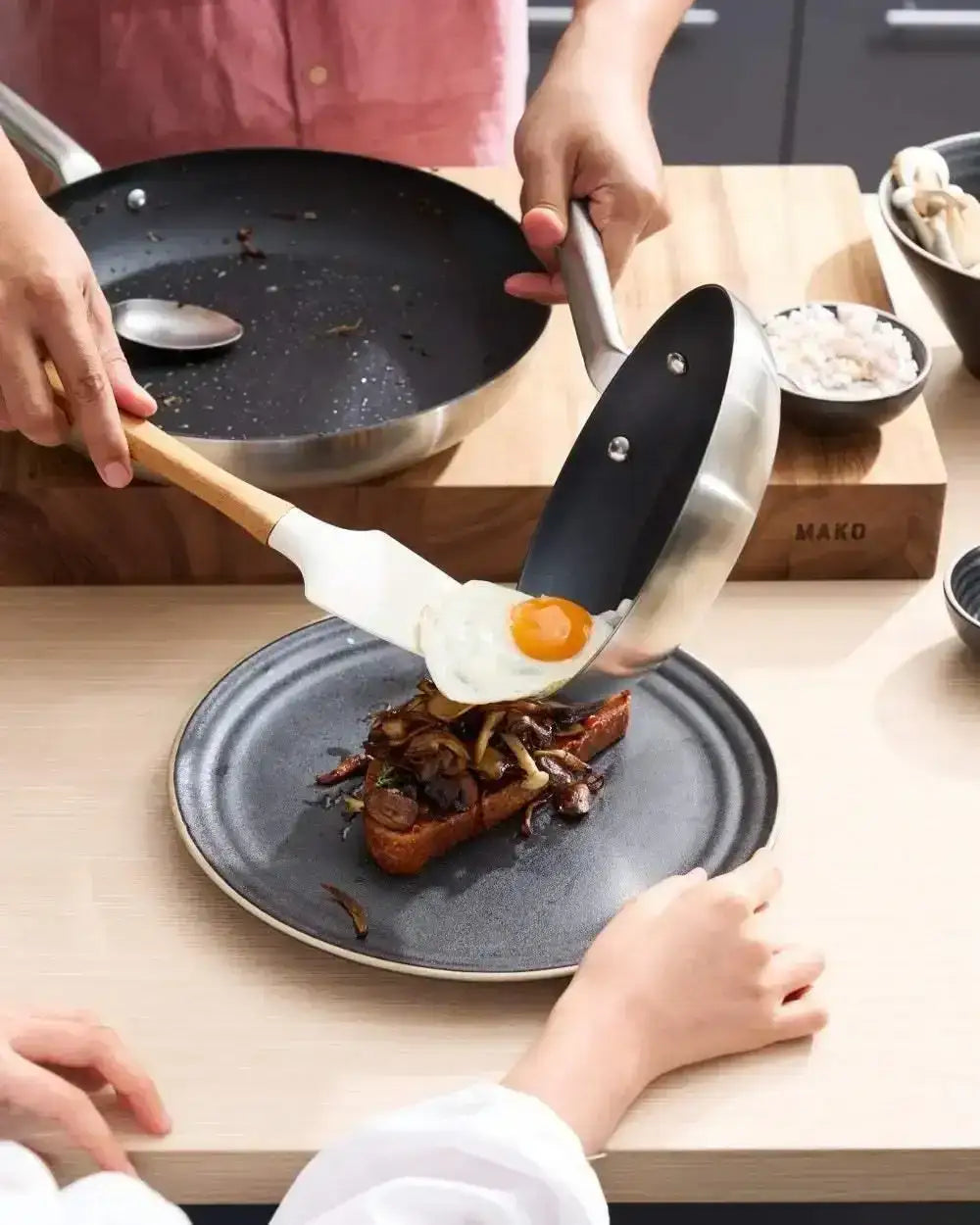
Copper cookware: why's it a thing?
If you’ve ever seen snaps of kitchens filled with gorgeous copper pots and pans, then immediately succumbed to Serious Saucepan Envy, you’re not alone. Copper cookware is beautiful and who wouldn’t want a few shelves of it in their own home? It’s not the most common of cookware, plus it’s expensive, so why is copper even a ‘thing’?
What’s the big deal with copper cookware?
Copper has been used for cookware since ancient times, becoming a symbol of the culinary arts in the 18th and 19th centuries, particularly in France. Copper is one of the best conductors of heat, which means it responds fast to temperature adjustments, giving supreme control over the cooking process. This makes it perfect for everything from stews to the most delicate of sauces and even confectionary, where precision is utterly crucial.

What are the downsides of copper?
- Copper is extremely expensive.
- It’s highly reactive so copper pans need to be lined with tin or stainless steel to be useable.
- Copper is high maintenance; in the 18th and 19th centuries they often had home help to polish and shine their copper but these days, you’re on your own. It takes effort to keep those pans gleaming and prevent tarnishing.
- You’re not able to use copper on induction cooktops as it lacks the necessary magnetic qualities needed to work.

What are the best ways to utilise copper in cookware?
Happily, there’s another way to get the precision of copper into your cooking. It’s called 5-ply (or ‘cladded’) stainless steel cookware. ‘Ply’ just means ‘layers’ in the context of cookware, so 5-ply pans are literally made of 5 thin layers of different materials, bonded seamlessly together.
Typically the layers are a stainless steel outer and inner, both layers fused with a layer of aluminium, then with a layer of copper at the core. This construction gives all the heat-responsive and conductive benefits of copper (and aluminium as well, which is also an excellent conductor of heat), but with none of the downsides of straight copper pans. And it combines these benefits with the durability and easy-care advantages of stainless steel.
Quality 5-ply pans aren’t the cheapest, but they are considerably less expensive than copper and every bit as long-lasting. If you buy well-designed performance cookware, 5-ply pans have a sleek, minimalist beauty of their own, making them look good in any kitchen. Just like copper pans, they’re investment pieces you’ll only have to buy once.




















